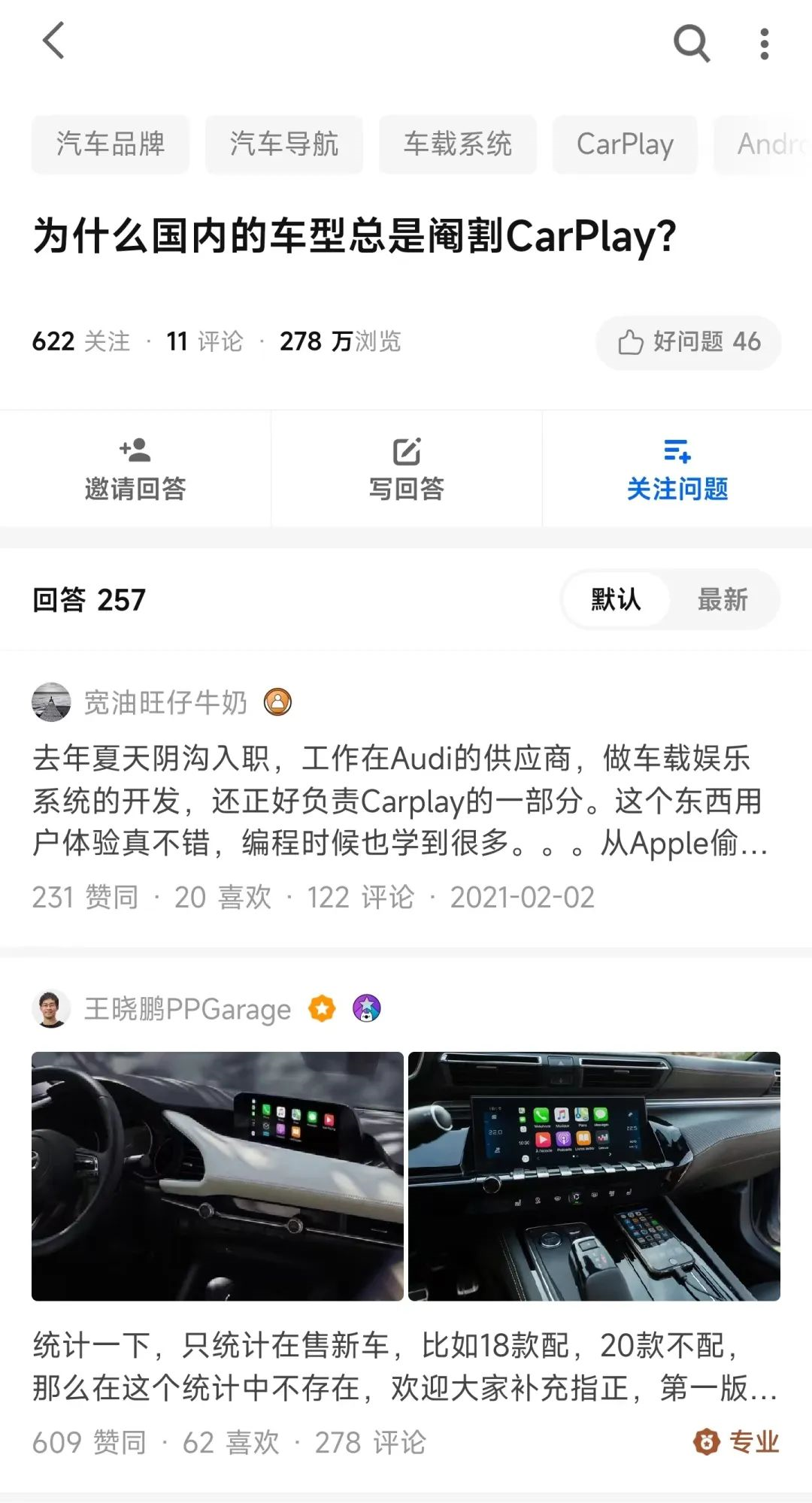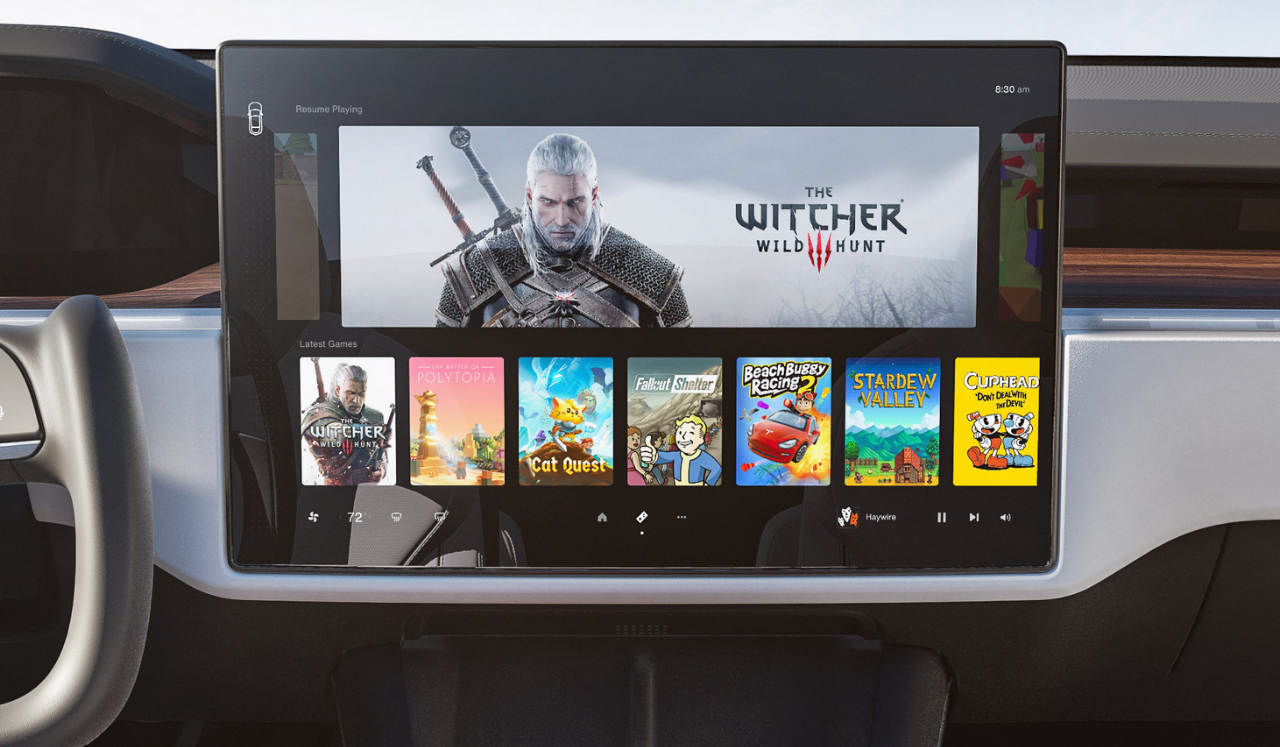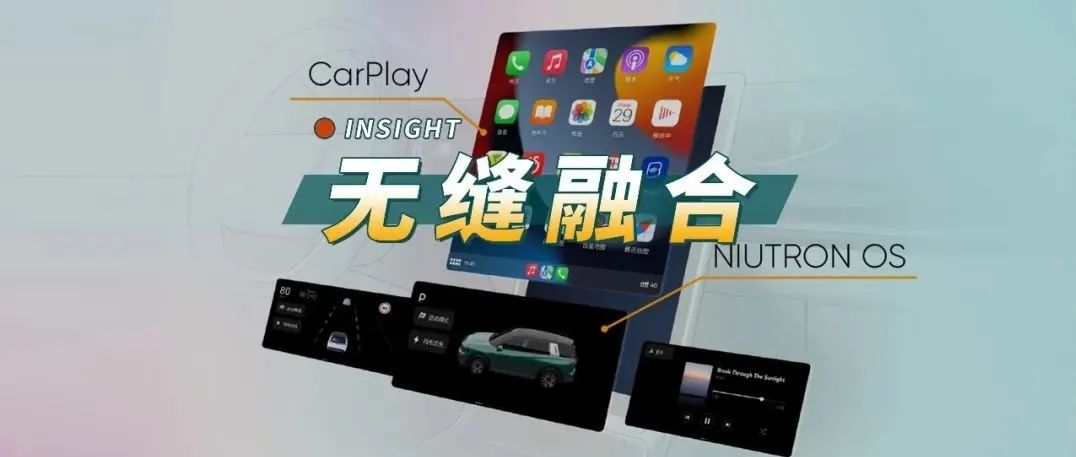Author: The Office
“Why are domestic car models always castrated for CarPlay?”
On Zhihu (a popular Chinese Q&A platform), this question has been viewed 2.77 million times, and the vast majority of netizens hold negative opinions on car companies that do not pre-install CarPlay.

In the era of smart cars, car companies have three basic forms of business logic for smart cockpits:
- Represented by Tesla and WmAuto, they self-develop smart cockpits to replace mapping solutions led by CarPlay by accessing third-party content and services with new interactions.
- Represented by the old products of joint venture car companies, CarPlay etc. are the complete solutions for smart cockpits.
- Represented by Volkswagen ID.3, self-developed smart cockpits, but also provide CarPlay as a fallback option for user experience.
On April 22nd, Zhiyoujia NV brought a fourth route: Zhiyoujia NV will simultaneously support CarPlay (and OPPO Carlink, Huawei HiCar, taking CarPlay as an example) and Zhiyoujia’s self-developed NIUTRON OS, and provide Smart Stacks modular interaction that allows the two systems to be displayed on the same screen as the industry’s first cockpit form to integrate mature smart phone ecosystems and vehicle underlying settings into the entire vehicle control OS on the same screen.

The two systems each do their own job, and Zhiyoujia NV provides new imagination for the industry.
Chips Are Fast, Cars Are Slow
The improvement of the user experience for self-developed smart cockpits is beyond doubt, as evidenced by the intelligent reputation and rapid sales growth of companies such as Tesla and WmAuto. However, just like any coin has two sides, there is no perfect solution.
@王晓鹏 PPGarage, a Zhihu influencer and former performance integration engineer, believes that for car owners, self-developed smart cockpit systems from scratch have more or less learning costs, and there are also some disadvantages in terms of paid content and services, and voice interaction.
 The dilemma of developing a self-made intelligent cockpit lies in this: if car manufacturers fail to attract Apple to join forces, then Apple will become their biggest competitor. Car manufacturers have to benchmark Apple’s user experience, which means a high R&D threshold. From current feedback, besides Tesla and WmAuto, the vast majority of car manufacturers lack such R&D capability.
The dilemma of developing a self-made intelligent cockpit lies in this: if car manufacturers fail to attract Apple to join forces, then Apple will become their biggest competitor. Car manufacturers have to benchmark Apple’s user experience, which means a high R&D threshold. From current feedback, besides Tesla and WmAuto, the vast majority of car manufacturers lack such R&D capability.
But the problem does not stop there. In 2022, intelligent cockpit systems based on Android Automotive OS are beginning to adopt the Snapdragon 8155 chip – the vehicle version of the Snapdragon 855 chip. Released in December 2018, the Snapdragon 855 chip had been used on smartphones such as the Samsung Galaxy S10, OnePlus 7 and Xiaomi 9. Due to a variety of complex tests required for vehicle regulations, the mobile chip that was released in 2018 will not be mass-produced until 2022 for vehicle installation.
More troublingly, according to a report from the Yiche Research Institute, the average age of a privately-owned car in China is six years, which is roughly equivalent to the average replacement cycle of 6-7 years. This means that for the vast majority of car owners who bought a car this year, the best intelligent cockpit system experience they can enjoy will have to come from the Snapdragon 8155 chip released 10 years ago.
The rapid iteration of chips and the long life cycle of the entire vehicle creates a structural contradiction. Many car manufacturers have proposed corresponding solutions. For example, Tesla, NIO, XPeng, and GKUI are all car manufacturers that have launched or are planning to launch a scheme of paying for chip hardware updates 2-3 years after delivery.
This is a good solution, but it should not be the only one. Of course, this is also a problem that NV must face.
Is CarPlay the best solution? It seems unrealistic to have a chip that supports 8-10 years of long-term user experience. According to Strategy Analytics, the average replacement cycle for Chinese smartphone users is 28 months, meaning that it matches well with the iterative updates of chips and the ongoing development of the mobile internet ecosystem.
In other words, because people change their phones frequently, CarPlay won’t encounter mid-to-late stage lagging or unresponsive issues. So everything goes back to CarPlay. Should we give up resistance and embrace Apple as the best solution?It has to be said that, given Apple’s decade-long dedication to the powerful mobile internet ecosystem, CarPlay has a broad “popular” base. CarPlay can use Gaode or Baidu maps for navigation, listen to songs with QQ or Netease Cloud Music, and will always receive OTA updates and upgrades from these content and service providers in a timely manner.
But CarPlay has its own problems. Ultimately, CarPlay is a screen-casting solution. The iPhone can be connected to a car with a CarPlay receiver via a data cable or Bluetooth, but it won’t have any connection to the entire car’s electronic and electrical architecture.
That is to say, CarPlay cannot control the car’s windows, air conditioning… Only CarPlay’s intelligent car is smart, not the car itself, only the phone.
And in the past five years, the widely acclaimed camping mode, rest mode, and sentry mode in the smart car field all depend on the seamless integration capabilities across different electronic and electrical parts supported by the powerful entire vehicle electronic and electrical architecture, spanning high-pressure power supply, intelligent driving domain, body domain, low-voltage electronics, and so on.

Take the sentry mode as an example. To implement this function, it is dependent on the high-voltage battery’s continuous power supply, the intelligent driving domain controller not losing power throughout, and the camera controlled by it recording throughout, storing it in a U disk via the data interface controlled by the information and entertainment domain.
More importantly, without a smart car supported by an advanced electronic and electrical architecture, the imagination of the next sentry mode would be lost.
NIUTRON OS, the self-developed OS of Self-Driving Family NV, has low-level control capabilities in vehicle settings that are integrated with electronic and electrical architecture, which can support multiple settings such as windows, air conditioning, driving modes, and assisted driving controls. This lays the foundation for continuous updates based on user feedback after delivery.
However, like Tesla and Weixiaoli, if the entire cockpit is driven by NIUTRON OS without the support of a powerful cockpit team and research and development investment, NIUTRON OS has no advantage when facing the powerful smartphone ecosystem in terms of interaction learning costs, building a completely new in-car content and service ecology, and so on.
Smart Stacks Block-Insertion Interaction
Self-Driving Family NV has put forward a very idealized but never-practiced cockpit layout, which is a compromise layout. CarPlay is responsible for information and entertainment and other application needs, and vehicle control is left to Self-Driving Family NV’s self-developed NIUTRON OS.The requirements implemented by CarPlay, such as playing music and navigation, are displayed on the top of the central console screen when the car owner enters the car. Meanwhile, the vehicle control module controlled by NIUTRON OS is displayed at the bottom of the central console screen. The two operate independently without interfering with each other.
It seems that this is a strategy that draws on the strengths of others, while considering the learning cost and interaction efficiency, and ensuring a user experience equivalent to that of a smartphone. Smart Stacks’ interactive building block combination is an imaginative exploration.
In fact, in addition to Smart Stacks, NV’s 5-way interactive steering wheel dial supports blind operation for assisted driving, information display, music, phone, and other interactions. The NV has six linear motors built into the central console screen, which support Real Touch haptic feedback. These designs, along with Smart Stacks, are products of the NV’s “immersive, easy-to-use, and imperceptible” principle.

Of course, this principle also leaves us with many questions about Smart Stacks. For example, whether the interaction design of NIUTRON OS should be as close to CarPlay as possible, in order to minimize the learning cost of users, given that the logic of App mapping between NIUTRON OS and CarPlay is highly consistent and CarPlay’s interaction logic has matured.
Undoubtedly, thanks to the world’s most competitive and prosperous market for intelligent electric vehicles, there is a constant stream of solutions of different routes and forms. Smart Stacks’ interactive building block combination is undoubtedly a new exploration from the user’s perspective, and it remains to be seen how users will respond to such exploration.
This article is a translation by ChatGPT of a Chinese report from 42HOW. If you have any questions about it, please email bd@42how.com.
